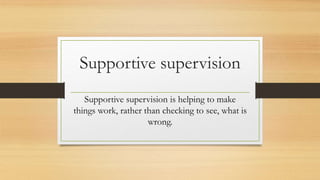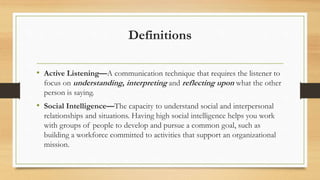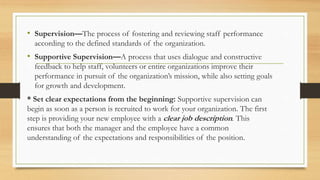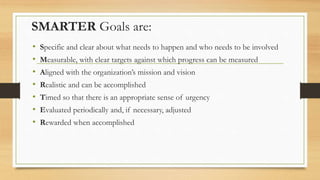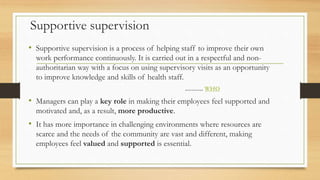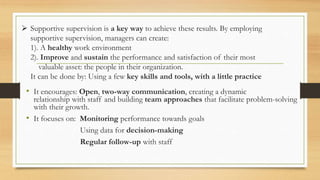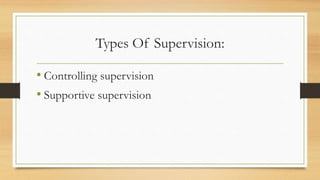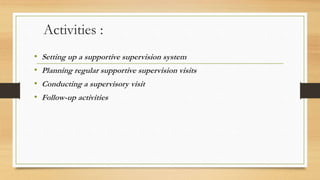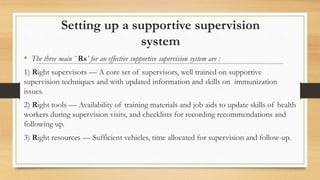1). Supportive supervision is a process that uses constructive feedback and dialogue to help staff improve performance in pursuit of an organization's mission, while also setting goals for growth.
2). It encourages open communication and building relationships to facilitate problem-solving and staff development. Regular monitoring of performance data and follow-ups are conducted.
3). Key aspects of supportive supervision include setting clear expectations, establishing SMARTER goals, using active listening skills, conducting regular planned supervisory visits, and follow-up activities to ensure recommendations are implemented.
